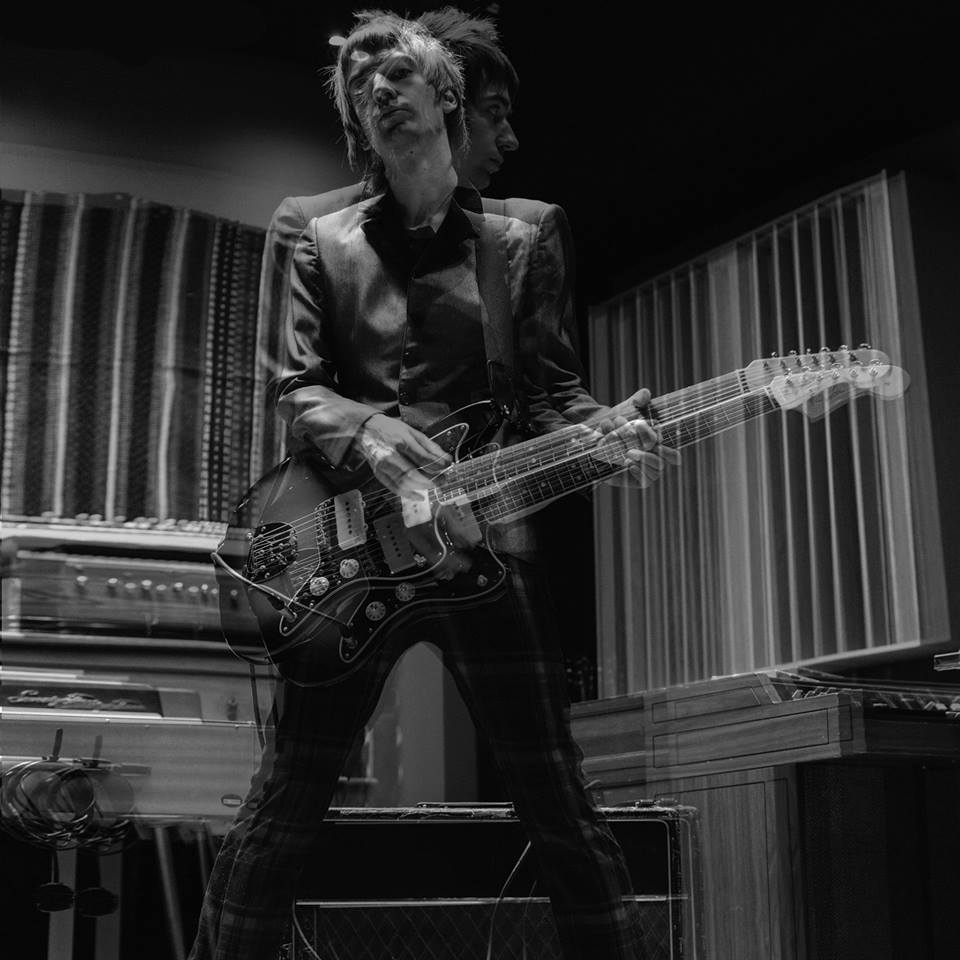
Jeff Wootton is a multi-instrumentalist that found fame, at only 23 years of age, as a live musician for Damon Albarn’s brainchild, virtual band Gorillaz, in 2010. Bandmates in that project consist of guitarist, Mick Jones; and bassist, Paul Simonon, both of The Clash.
This lead to lead guitar duties on Albarn’s solo material, and work as part of Africa Express in Mali, with, again, Albarn, and also Brian Eno and Nick Zinner, amongst others. He’s also collaborated with Massive Attack, Damo Sazuki of Can and Blur’s once arch enemies in both Gallagher brothers, of Oasis.
Now, the Mancunian releases his debut album The Way The Light. Wootton plays every instrument on the album, bar the drums, which are handled by Mark Heaney, of Gang of Four fame. There was also studio help from highly regarded engineer Mark Howard, who’s worked with Bob Dylan, Neil Young, Daniel Lanois and U2. His friend, artist Damien Hirst, is enlisted for the album artwork, and has created something for each of the ten tracks on the album.
In terms of inspiration, Wootton talks very highly of one particular past collaborator, and says, “Brian Eno is a great theorist and listening to him taught me a lot. Many of the records he made were not recorded in conventional studios, where the control room is in a separate room to the live room. Having the musician and the engineer working together in the same room can give a record a great ‘feel’, which I hope we’ve captured on the album. I also experimented a lot with sonic’s like Eno would do, especially on the guitar”.
The opening track, “Sea Of Sound”, begins with a wall of sound before launching into some raucous guitar. This then fizzles out with some wailing organ. There’s a reprisal of the guitar, with those keys right under it in the mix. Then there’s a middle section of sorts, not a guitar solo as such but definitely a melody unlike heard before; bringing the song to a new place.
“Venus” is fuzzy but contains what could pass as a classic rock guitar riff. It becomes chugging, almost like heavy metal, but slightly subdued. Like blues rock, with a touch of distortion. The song structure’s a bit more conventional than the previous track. There’s what could be construed as interference at times, which builds upon the ambience of the whole thing. There’s recorded vocal samples that ring out and repeat to further the effect. The precise words are indistinct, but that doesn’t take anything away from it all. A grunt repeats, like an animal noise, and continues until the track fades out.
The atmospheric “Sonik Drips” begins with tinkles of sound that are very relaxing and wash over the listener. Drips indeed. There’s again some vocal samples, and the words, again, aren’t that clear. The pace increases with some very rapid drum beats, almost tribal in their intensity. These get louder and even more intense, almost with like an industrial character to them. The crash cymbals announce the conclusion of the track before another fade out.
The album carries on with “Reprise (Reverie Interlude)”, which leads into “Reverie”. The former is another ambience effort, with guitar tracks layered over eachother. It’s definitely an interlude, because it’s barely two minutes long. Serves its purpose, though. The latter starts calmly with weird but pleasing bursts of sound before guitar and bass kick in a high octane riff that drops down an octave come the verse proper.
This helps the bass fill out the lower frequencies, and sounds all round better rounded. It switches back to the higher octave occasionally, just to avoid repetition. There’s a guitar chordal melody that gives the track some sense of movement; forward motion. Probably one of the best tracks on the album.
Closer “The End” is epic in its construction. Starting with some noodling on the guitar, drums kick in and weird sound effects add to the overall ambience. It’s quite indulgent, but building most soundscapes is usually that sort thing. Everything is about being constant, not seeking forward motion on a constant basis. The guitar leads build up in intensity and, shocking in some respects, beauty.
Seeming, random stabs of keyboard punctuate the track, eventually, and give almost a very futuristic element to the whole thing. The sound level comes down, just jazzy drums and occasional guitar can be heard. This builds up again, but those same drums are still setting the tone. A guitar lick is repeated twice or thrice, just to give the song some structured melody. To close the whole thing is a incessant sample that gradually lowers pitch until the song’s end.
This largely instrumental album pleases generally, but is a very, daresay it, avant garde affair. Even the songs without overly distinct exploration, like “Sea Of Sound” and “Venus” still add to the album. When the likes of “Sonik Drips” comes on the go, it’s only then things get a bit more conceptual and ambient.
Highlights “Reprise (Reverie Interlude)” and “Reverie” mix long ambience and conventional structure quite well. “The End” is a bit more off the leash, but still can please without strict passages that are generally recognisable from the last.
Jeff Wootten, with this sonic assault, is brave man indeed. There’s the right mix of ambience and melody to please a plethora of people. A fair cross section of listeners to previous works he’s been involved with will no doubt be interested. Jeff Wootton’s The Way The Light is out now via Sympathy For Vinyl, purchase it on iTunes here.
Words by Andrew Watson




